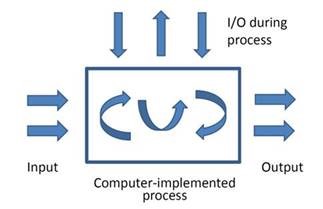The written decision from the Enlarged Board is in! The decision is 66 pages long and was issued by the EPO with an accompanying press release. We've been through the decision, picking out the details, and our thoughts on their impact are below.
Take home message
The good news is that computer-implemented simulations are not excluded from patentability in Europe. There are aspects of computer-implemented simulations that the Enlarged Board have said could be patentable, but the key factor in every case will be that of whether there is a "technical effect". The Enlarged Board has made clear that the EPO’s existing COMVIK approach to assessing the patentability of computer-implemented inventions applies equally to simulation-type inventions.
Background
This application was concerned with a simulation process which included a numerical input and a numerical output. The method simulates motion of people in, for example, the passageway of a building. The steps of the method are characterised by simulating human traits such as socially distancing within a crowd and moving into gaps of a crowd when they appear (we can barely remember what a crowd is like anymore). You can find more detail on this in our previous post on the hearing.
The Enlarged Board’s answers
Three questions were put to the Enlarged Board, and they answered as follows:
-
A computer-implemented simulation of a technical system or process that is claimed as such can, for the purpose of assessing inventive step, solve a technical problem by producing a technical effect going beyond the simulation’s implementation on a computer.
As we expected from the hearing, the Enlarged Board were not going to undo the case law (for example T1227/05) that established that a simulation could be patentable.
-
For that assessment it is not a sufficient condition that the simulation is based, in whole or in part, on technical principles underlying the simulated system or process.
It is important with this point to note that whilst being based on technical principles is “not a sufficient condition” it is also not a requirement. Simply put, a technical effect may be had whether or not the simulation is based on technical principles underlying the simulated system.
-
The answers to the first and second question are no different if the computer-implemented simulation is claimed as part of a design process, in particular for verifying a design.
Were the Enlarged Board to change their answers based on whether the output was a verified design (or perhaps a manufactured piece verified by the simulation), this could have been a straightforward “get out” for applicants. What the Enlarged Board says matters is still the direct link to a technical effect.
Commentary
The answers to the questions in themselves are what we expected. What we now know is the detail behind them. What is clear from the Enlarged Board's reasoning is that they do not want to exclude a subset of computer-implemented inventions from patentability. At the same time, they do not want to elevate simulation inventions to a higher status for patentability than other computer-implemented methods. This is why the decision largely focuses on the impact of the "technical effect".

This figure from the decision neatly shows possible areas where technical effects can be had with a computer-implemented method. One potential for a technical effect can occur in the curved arrows in the middle of the black-box (or computer). This is where the simulation is particularly adapted to the internal functioning of the computer. For example, if the simulation is adapted such that the computer functions as a better computer (perhaps because it is adapted to the passing of 64 bit numbers between memory and processor) there is the potential for a technical effect, and an invention.
Input and output are two other possibilities because, as the Enlarged Board explains, "technical input may consist of a measurement; technical output may exist as a control signal used for controlling a machine. Both technical input and technical output are typically achieved through direct links with physical reality". What is key, again, is whether the input and output are considered to have a technical effect.
I/O during the process are not discussed in detail in the decision, but it would seem that simulations involving constant I/O during the process are likely to be considered in a similar light, there must be a direct technical effect.
So where does this leave applicants? We would suggest in a similar situation as to other computer-implemented processes. It is going to be particularly important to think about technical effects when drafting any applications directed to simulations, as we already advise our clients on any computer-implemented invention. The Enlarged Board have been careful not to rule anything out, so simulations of non-technical systems might be linked to a technical effect (an example being weather simulations), and technical systems might be linked to non-technical effects (an example being any technical system modelled on game theory).
In relation to further technical effects, the EPO provides this list in its guidelines which gives examples of computer programs which might produce a technical effect. Anti-lock braking, compressing video and encrypting electronic communications being some. Simulation of 1/f noise in an electronic circuit is just another example where the EPO are happy that we are dealing with technology and not something that is non-technical.
Conclusion
In conclusion, as with all computer-implemented inventions, your simulation invention might be patentable, but only if it can be directly linked to an effect which is deemed technical. The Enlarged Board has said that the existing COMVIK approach is the test to apply, and has provided useful confirmation of the considerations that should be made.
If you have any questions, please get in touch with Gareth, Alex or your usual Kilburn & Strode advisor.